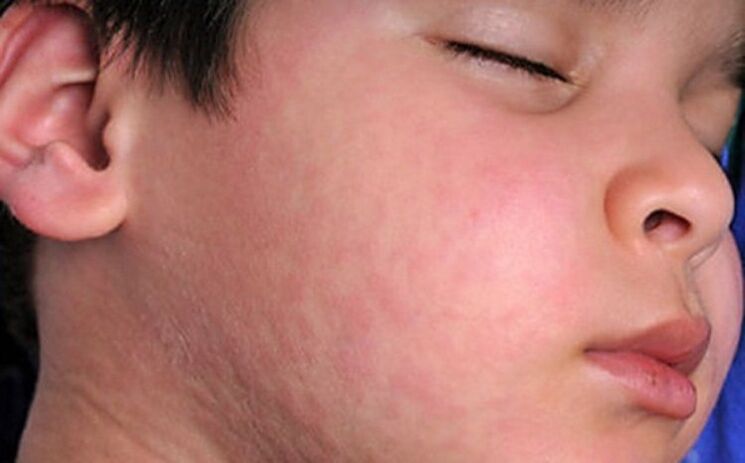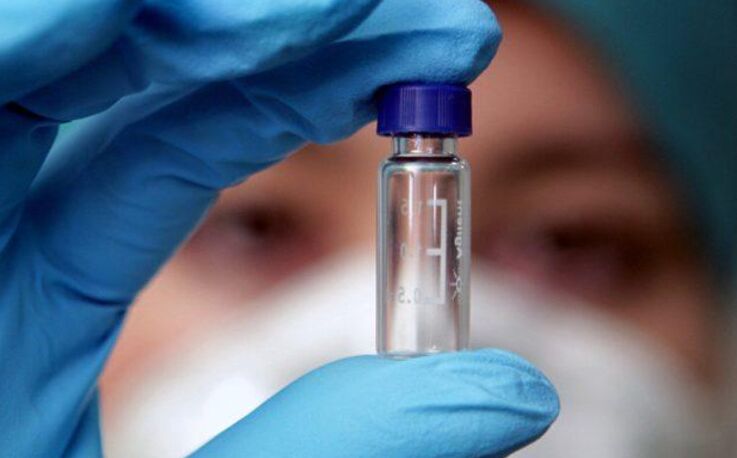
Worm eggs are small in size. Invisible to the naked eye, they are everywhere - in soil, on transport handrails, on doorknobs, in children's sandboxes, on pets' fur.
How can a worm infection be prevented, or if it has already occurred, how to avoid dangerous complications?
Symptoms of Human Worms
No one can consider themselves immune to worms. Even the strictest observance of hygiene rules. To minimize the risk of infection, you need to know as much as possible about the symptoms of human worms, as well as the prevention and treatment of worm infections.
The most common parasites:
roundworms.Parasites belong to the class of nematodes and are round worms in cross section. Females reach 350mm in length, males are much smaller. Roundworms are dangerous in both the intestinal and migratory stages.
Localization of the complex form of the parasite in the gut can lead to intestinal blockage, and adult roundworms enter the respiratory tract with the risk of suffocation, bile duct obstruction and other complications. The migratory stage threatens the larvae infiltrating the lungs and other organs and developing severe lesions.
Ascariasis is infected with parasitic eggs, which leave the patient's gut with the feces and mature in the soil to the invasive stage.
- Diphyllobotrium latum.This is a class of tapeworms, one representative of which is the broad tapeworm. Their peculiarity is that they have 3 owners. The main organisms from which worms develop into sexually mature individuals are humans and some animals (cats, dogs, pigs, etc. ). The intermediate hosts of diphyllobotrium latum are freshwater crustaceans. Additional in the middle - fish (perch, pike, finless porpoise). Widespread tapeworms are contracted by eating undercooked fish infected with the larvae of the parasite - polycercariae.
Pinworms.These are nematodes, like roundworms, but much smaller. Females can be up to 10mm in length and males can be up to 5mm in length. Enterobiasis is one of the most common helminthiasis. Children are especially vulnerable to them.
The most typical manifestation of enterobiasis is anal itching. This can be explained by the female entering the perianal spawning area. In the folds of the skin, the embryo matures to the invasive stage within 5-6 hours. Placing them on your hands while scratching and then swallowing can lead to reinfection.

route of infection
The method of helminth infection depends on the invasive form of the parasite and how it penetrates the host organism.
Most parasites have two forms of infection - eggs (in some tapeworms they are called balls) and larvae. The latter are sometimes called Finns or cysticercosis. Eggs are microscopic in size, usually tens of microns. Larvae can reach a size of several millimeters to tens of millimeters.
Mostly, worms are infected by the oral route - through the mouth.But some types of parasites can invade through the skin or through insect bites. When the egg is swallowed, the embryo contained within it sheds, penetrates the intestinal wall into the bloodstream, and is carried throughout the body by the bloodstream. Depending on the type of parasite, they can colonize the liver, lungs, heart, pancreas, kidneys, brain, eyes.
Intestinal localization of the parasite occurs most often when infecting larvae. Because of their size, the larvae cannot penetrate blood vessels and migrate with the blood. They remain in the intestine, attach to the intestinal wall and grow to a sexually mature state, where they begin to reproduce.
The eggs are usually excreted from the gastrointestinal tract in the feces. In some cases, for example, with taeniasis, eggs can be excreted from the gut by fragments of worms - arthropods. They leave the gut on their own through the anus.

Main types of helminthiasis
The effectiveness of human helminth treatment depends on the clinical presentation and the degree of certainty of the nature of the damage caused by the parasite to the body. In turn, they depend on the stage of invasion - gut or migration.
Intestinal invasion phase.In the intestinal stage, the main damage to the patient's digestive system, especially the gastrointestinal tract. Worms use their suckers to damage the intestinal mucosa. This leads to disruption of inflammatory processes and gastrointestinal function.
In addition to the absorption of some nutrients by the worms, the absorption function of the intestinal tract is also impaired.Digestive capacity of the gastrointestinal tract is reduced due to the release of anti-enzymes by the parasite. All of these will lead to the lack of nutrients, vitamins and trace elements in the patient's body.
In addition to antienzymes, worms secrete other metabolites that act as toxins to the host organism. In addition to this, there is the rotting of dead insect corpses. As a result, the patient's body is severely poisoned.
Certain types of parasites are able to penetrate from the gastrointestinal tract into adjacent organs and tissues—the bile duct, gallbladder, liver parenchyma, and other systems. For example, adult roundworms are able to penetrate the host's respiratory tract at high infective intensities. Mechanical obstruction of the gut is possible with large numbers of parasites. This can be observed with both roundworms and tapeworms.
When the parasite enters the liver parenchyma, an abscess may develop, requiring surgical intervention.Intestinal perforation with entry of gastrointestinal contents into the abdominal cavity and the development of peritonitis are not excluded. Pancreatitis, cholecystitis, and cholangitis may develop due to the destructive effects of the adult worms.

Migration phase.Since larval embryos may infiltrate almost any organ, the migratory stage of invasion may exceed the gut stage in terms of severity of consequences.
Larvae that develop from eggs in organs and tissues develop inflammation and infiltrate. If this occurs in the lungs, the invasion manifests as bronchitis, pneumonia, asthma syndrome.
If parasite eggs penetrate the brain (eg, tapeworm egg balls), single or multiple blistered finns form in their tissues. They can be the size of a tennis ball. Because of the cyst's proximity to brain tissue, surgical removal leads to a high risk of purulent bladder rupture and secondary infection.
The patient's body is poisoned by the metabolites of live insects and the toxins produced by the decay of the corpse, which can lead to allergic reactions. The result is fever, skin manifestations, headache and dizziness.

symptom
The symptoms of a worm infection depend on many factors. There are some invasive features, but very few.Symptoms of most parasites are similar to other diseases.This makes making a diagnosis difficult. These common symptoms include:
- The state has deteriorated in an all-round way, and the body and mind are weak.
- feel sick and vomit.
- Stool disorders, constipation and diarrhea.
- Discomfort, heaviness, abdominal pain in various locations.
- Appetite changes up and down.
- Weight loss is not explained. Included in the context of increased food consumption.
- Itching around the anus, feeling as if something is moving there.
- Allergic manifestations in the form of rashes.
- cough.
- Dyspnea, asthma syndrome.
- Bruxism. Grinding of teeth during sleep is a typical symptom in children with anal itching.
- Increased excitability, irritability, insomnia, chronic fatigue, depression.
- Headache.
- Elevated body temperature, most commonly hypothermia. But sometimes it rises to high values.
- Dizziness.
During the initial stages of an invasion, symptoms may be completely absent or so insignificant that they are not given much attention. In the future, symptoms will become more pronounced as the intensity of the disease increases.
Symptoms of worms in human blood can vary depending on which organ the migrating embryo colonizes.If their location turned out to be the lungs, the patient may have a fever and may have breathing problems.Often in these cases, the infection is accompanied by a cough - ineffective or the sputum may be orange. The latter showed that the larvae damaged the small blood vessels in the lungs.
Symptoms of worms are accompanied by nausea, vomiting, abdominal heaviness and pain, profuse salivation, impaired stool and weight loss.
attention.In severe liver invasion, an abscess may develop as purulent contents enter the abdominal cavity. The development of this disease threatens the patient's life.

medical treatement
Treatment for invasion depends on many factors. Mainly the type of parasites, where they are localized, the stage of the disease (migration or intestinal), the intensity of the infection, the condition of the patient. In any case, treatment should precede the diagnosis of the disease.
The most common diagnostic test for infections caused by parasites is a stool test. If insufficient to make a diagnosis, general biochemical and/or enzyme immunoassays are performed.Hardware diagnostics are also available - ultrasound, radiography, MRI, etc.After a doctor has a full understanding of the disease, he or she will prescribe an antihelminthic medication.
important.Treatment with drugs with powerful active substances may cause side effects. This limits drug use in certain categories of patients. Especially for pregnant and breastfeeding women, children under a certain age, patients with certain viruses and infectious diseases.
To combat nematodes located in the gut and to eliminate extraintestinal worms, different drugs are prescribed.
important.Two courses of treatment are usually given, 2-3 weeks apart. This is because most antiviral drugs only kill adults. Their larvae and eggs remain intact. After the incubation period, a new generation of worms can emerge, and destroying them requires a second process.

Use of folk remedies
Treatment with folk remedies takes more time than medication. But this relative disadvantage is made up for by the herb's softness and lack of side effects.
There are many herbs with repellent properties - nettle, tansy, celandine, wormwood, horsetail, etc.Antiparasitic plants contain ingredients that are toxic to tapeworms, nematodes, and flukes, and often have a bitter taste.
Many anthelmintic herbs also have antiseptic and antibacterial properties. Their effectiveness depends on the correct preparation and administration of the dosage form. Below are some of the most popular herbs and products. But you need to understand that this is only a small part of what actually exists.

pumpkin seeds
It is no exaggeration to say that pumpkin seeds are the most popular repellent. They contain cucurbitacin, which is very effective against nematodes and tapeworms. Pumpkin seeds can be used not only for treatment but also for prevention.
Most of the cucurbitacin is contained in the film, between the core and shell.Therefore, the seeds are best eaten unpeeled. For treatment, you need to eat 300 grams of seeds at a time. For prevention, 100 grams for adults and 70 grams for children are enough. You can prepare an enema solution from pumpkin seeds that is effective against worms that reside in the large intestine.
garlic
Garlic is a panacea, as effective as pumpkin seeds. It contains phytoncides and essential oils, which have inhibitory effects on various parasites. Garlic is highly active against nematodes, especially roundworms.
soda
Parasites do not tolerate alkaline conditions well, so baking soda is an effective remedy against them. It can be taken by mouth, but the greatest effect of sodium bicarbonate is obtained by making an enema solution from it. It should be used when locating nematodes or tapeworms in the large intestine.
Honey
Honey doesn't need to be advertised as a medicine, but not everyone knows it's also effective as a dewormer. For this purpose, you will need half a teaspoon 9 times a day.You will need to refuse food during full-day treatment.
The next day, only fresh vegetables are allowed. Since honey has no contraindications and side effects, it can be used to treat young children. It is recommended to give them a glass of water with a teaspoon of honey.

carrot juice
Even official medicine, which is sometimes very strict with folk remedies, admits that carrot juice has anthelmintic properties. The amount of juice taken at one time is not limited by any requirements, and everything is reasonable.
castor oil
Many types of nematodes and tapeworms reside in the gut. Some laxatives work well for them, especially the familiar castor oil. For adults, this recipe is suitable. Mix 80ml of cognac with castor oil and drink it down before bed.
The procedure was carried out for 3 days. Give the children some sweet drinks (preserves, juice, tea) at 1-2 in the morning, after half an hour - 15-30 grams of castor oil.
in conclusion
If the parasite is not clearly manifested (for example, in the form of whole individuals or fragments in feces), it is almost impossible for you to determine whether an invasion is present. Therefore, you should not hesitate to contact an infectious disease specialist at the first symptoms that may indicate an infection.
In his arsenal there are tools that allow you to build an invasion with a 100% chance. Delays in contacting a clinic or self-treatment based on self-diagnosis can end sadly, even death.






































